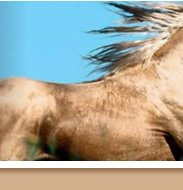![]()
![]()
![]()
![]()
![]()
![]()

![]()
![]()
![]()
![]()
![]()
ArticlesThe Doberman Pinscher A Relatively New BreedLess than 150 years ago, a German tax collector named Louis Doberman worked out the genetic profile for the current day Doberman Pinscher by using several breeds common in that day. German Pinschers, naturally, are one of the current-day Doberman's ancestors, as are Greyhounds and Rottweilers. The result is an incredibly agile dog that can be trained to be perfect for many situations. While there are some natural tendencies toward protectiveness, a well socialized Doberman Pinscher can be the perfect family pet or an excellent therapy dog for nursing home patients. So what is it that's given the Doberman Pinscher his "bad boy" image? Like many trends, it's the fact that some people trained these naturally protective dogs to fight and to be overly aggressive. While it's a fact that some Doberman Pinschers tend to be aggressive, it's also a fact that most dogs are not naturally so if they've been properly socialized and trained with a patient, steady hand. Looking at the profile of a Doberman Pinscher, it's easy to see the sleek lines of some of those ancestors. Though not nearly as slender as a Greyhound, the Doberman does have a very agile body. The short coat sheds in moderation. The accepted coloring is black and brown and there is typically very little variation among purebreds of the breed. Docking tails and ears is an accepted practice for purebred Dobermans and most breeders participate in this practice, unless it's prohibited in their area. If the tail and ears are allowed to grow naturally, they almost resemble that of a hound, changing the appearance of these dogs quite dramatically. The dogs are naturally intelligent and tend to learn well. That tendency is enhanced by the fact that they usually want to please their people. If trained for nursing home or hospital therapy, these dogs seem to naturally slow their pace to match that of the patients. They are patient to a fault, but will also be protective if they feel someone they should protect is being threatened. These dogs, like many breeds that bond well with their family, want to be close to those they love. They don't usually like to be left alone for long periods of time, though they do offer profusely joyful greetings when you return. If you do leave a Doberman alone for a period of time, be sure to "dog proof" the area as much as possible. They can search for things to demolish, probably from either frustration or retribution! Despite the fact that Doberman Pinschers are often touted as vicious dogs, not all members of this breed are aggressive at all. Be sure that your environment is suited to this dog before you take one into your home. If you can offer socialization and have the patience to offer steady, positive training, you may find that a Doberman is your new best friend. And there's no doubt that the mere presence of a Doberman on your premises will give would-be intruders reason to stop and reconsider their next move. For more information on Doberman Pinschers and other Popular, and not-so-popular breeds of dogs, visit The Working Dog Directory Horses How to Get Free Garbage Bags - The scenario: A newlywed couple moves into their new home. supply SinoNSH GER Gas Engine Oil Regenerationoil purifieroilpurificationoil filtrationoil rec - NSH GER Gas engine oil regeneration(oil purifier,oil purification,oil filtration,oil filter,oil treatment,oil recycling,oil regeneration,oil filtering, oil reclaim plant,oil recovery,waste managment,oil disposal,oil reclamation. Enjoying the Beauty of the Spring Season - The spring of the year is a favorite season for many people, and it is certainly easy to understand why this is so. sell sinonsh insulation oilrecyclingfilterpurifierfiltrationpurificationregenerationtreatme - VFD--Double-Stage High-Efficiency Vacuum Insulation Oil Purifier Application VFD series is mainly used to improve the properties of insulation oil. New York Green Building Initiative - As is occurring in many states, New York is trying to promote Green Building practices. more... |
![]()
![]()
ęCopyright 2025 Alhaja.net All rights reserved.
Unauthorized duplication in part or whole strictly prohibited by international
copyright law.
![]()



